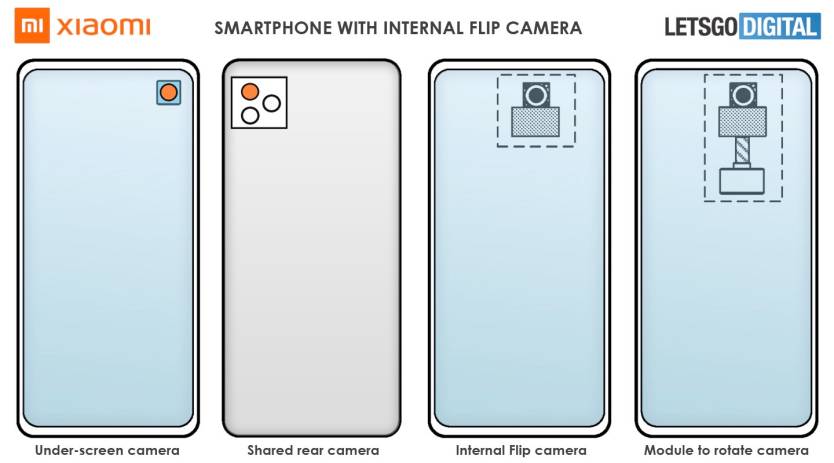This Simple Trick Could Change The Way Smartphone Cameras Work
When it comes to smartphone design, we've been in a holding pattern for at least a couple of years, as we're waiting for handset makers to bring to the market the perfect phone. The iPhone 12 comes with a brand new design, but the screen has the same notch as the 2017 iPhone X. Over on Android, hole-punch cameras are the norm of all-screen smartphones. The selfie camera might be piercing through the screen from a central position or off-center. It might feature one or two lenses. But the phones look all the same.
Things might get even worse when the perfect design drops. Smartphone vendors are working on camera technology that will let them place the selfie cam under a functional OLED screen, at which point phones will lose notches and display holes. Apple is even rumored to be working on Face ID components that would work through the display.
We saw prototypes with under-display cameras back in 2019, and the world's first commercial product to use the technology launched last year. But the feature has yet to go mainstream. Camera quality might be a challenge that phone makers still need to overcome, but Xiaomi already has a brilliant idea for killing two birds with one stone.
Chinese smartphone maker Xiaomi is known for demoing new smartphone features before they're ready for commercial products. The companies unveiled under-display cameras, fast battery charging tech, and long-distance wireless charging tech in recent years, well before the features were ready for mass consumption.
Dutch blog LetsGoDigital found another Xiaomi innovation that might be shown in future concept handsets, a revolving camera that would work both as an under-display selfie camera and a rear camera lens. The patent was filed with the WIPO last February and published a few days ago.

Xiaomi patented technology describing a camera that can flip between selfie and rear camera positions.
The revolving camera would feature a mechanism that allows the camera to flip between selfie and rear camera, depending on the user's needs. By default, the rotating camera would be facing the back of the phone, ready to be used for capturing regular photos and videos.
The images above show a phone featuring a triple-lens rear camera module, with the top camera being able to rotate between the front and back positions. When in selfie mode, the camera turns internally, and the display area around the camera will be disabled so light can reach the sensor. A magnetic or motorized mechanism will make the camera rotation possible.
There are some obvious advantages to be considered for such a camera technology. If employed, the system Xiaomi to use the same primary camera for selfies and video chat apps. Selfie cams are rarely on par with the primary rear camera when it comes to performance. Not to mention that under-display cameras might be further disadvantaged compared to traditional selfie cams. That's where a better selfie cam might help. By rotating the primary camera from the rear module, Xiaomi might improve the selfie cam performance without paying more for a better selfie sensor.
Recycling a camera from the rear module wouldn't just save some money, as buying a separate high-end selfie sensor will no longer be required, but also internal space that could be used for increasing the battery capacity. On the other hand, a revolving camera will need additional components to allow that sensor to rotate, which could consume space that would be otherwise allocated to the battery.
Rotating a lens inside the phone could have an additional side-effect. The phone's camera bump, which is usually thicker than the rest of the phone, might have to be even thicker to make possible that lens rotation.
Then there's also malfunction risk to consider. A flip camera with moving parts can always fail, and that was the main worry with camera systems sliding out from the phones in the years that followed the iPhone X launch. But with this internal rotating camera, there's no worry that debris will get into the camera mechanism, as everything would happen inside the handset.
As with other patented technology, there's no telling if or when Xiaomi will use the technology. Xiaomi isn't the only handset maker looking at using the same image sensors for front and rear cameras. Apple has a 2015 patent that proposes a system of mirrors to beam light from the front and rear cameras to the same internal sensor. Like Xiaomi, the technology would help Apple reduce the number of sensors used in a phone. But unlike Xiaomi, the tech doesn't involve an actual camera rotating inside the iPhone.
